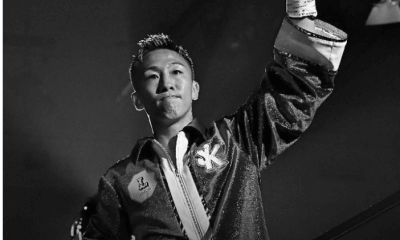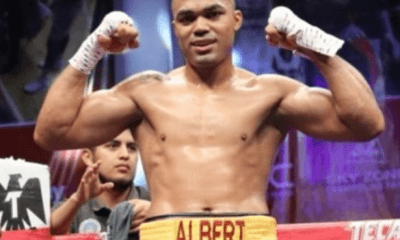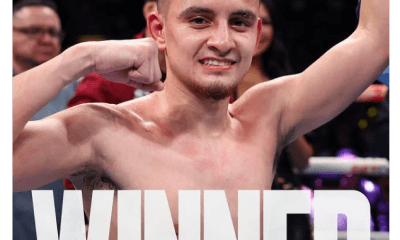Featured Articles
British Boxing 2020 Year in Review
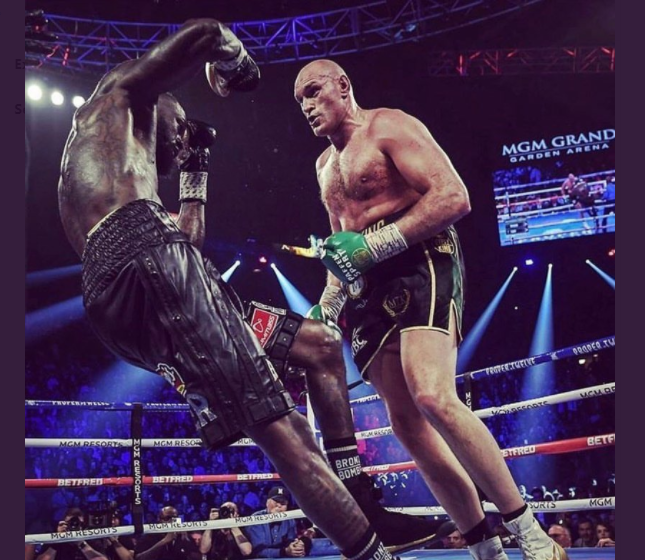
British boxing was as brutally handled as any other footfall industry in the UK in 2020 and remains a disaster for small-halls and amateur clubs. Disgracefully, boxing has been all but abandoned by a government that was somehow able to find millions for horse-racing and the wealthy elite who run it, but nothing for a sport which begins, almost always, in the streets of our local communities.
Nevertheless, elite boxing led the charge back to the ring. By mid-summer, Britain’s two top promoters Eddie Hearn and Frank Warren were back, albeit under a series of agreed controls as wide as they were strange, including the sight of covid-free cleaners cleaning a covid-free ring between contests undertaken by covid-free fighters. Such is the world we live in now.
It is telling, though, that this year’s British Fighter of the Year managed just 1-0 in 2020, while last year’s managed 0-0. Despite a marked decline in contests, there were more than a few candidates in each category.
Though not the first.
British Fighter of the Year: Tyson Fury
Just another bum with a pair of gloves on. Time to go to work! – Tyson Fury.
It is testimony to the gravitational pull of the heavyweight division and the astonishing arc that is the Tyson Fury story that no other boxer can seriously be considered for the British Fighter of the Year spot. Tyson Fury has it all locked up.
It is two years now since Fury blinked himself tenderly from the canvas after Deontay Wilder detonated that money-maker on his chin in the twelfth found of their first fight. It is worth taking the time to review his gameplan for that fight: box, move, bamboozle, tie up, pop the decision out in rounds. Instead, he was savagely dropped twice and had to make-do with an ill-received draw in what seemed a clear win for the Brit.
Consider then, the change of mindset and manner that saw him box the February rematch with Wilder in the mode of cyborg.
Fury undertook a change of trainer – also ill-received – swapping out sentimental favourite Ben Davison for boxing royalty, “Sugar” Hill Steward, nephew of the late great Emanuel Steward. The expectation was that Sugar would polish a Rolls Royce already bereft of the need of detailed instruction and that Fury would either box his way to victory or fall afoul of the Wilder right hand. Neither of these things happened.
“The best way to beat a bully,” Fury said of the contest, “is to take the fight right to them, bully the bully.”
Wilder, who had mentioned once more in the build-up to this fight his desire to end a life in the ring, probably qualifies as a bully and what Fury did to him certainly qualified as bullying. Physically much bigger, Fury launched himself across the ring at bell and spent most of the rest of the fight backing his man up, his lead toe discussing only the range at which he could land in response to Wilder’s own movement. It works now as a study guide for boxing’s most difficult tax: physically overmatching a massive punching heavyweight. By the time the towel was thrown, Wilder looked dragged over gravel.
Sadly, contracts and covid kept Fury out of the ring for the remainder of the year making him vulnerable to rust in what looks to be a massive 2021 for the Gypsy King. Nobody comes close to reaching him though, the clear British Fighter of the Year and very possibly the clear British fighter of the coming year.
British Fight of the Year: Sam Eggington Vs Ted Cheeseman
I give my heart and soul to this sport, I come through my problems. – Ted Cheeseman.
It is what it is. That’s the way it goes. – Sam Eggington.
Some background:
Ted Cheesman, tough, limited, set out in 2019 to prove himself something more. He boxed, slipped and stabbed his way to what appeared a close decision win in a fascinating fight – but the judges favoured opponent Scott Fitzgerald. His heartbreak was clear in post-fight interviews as Cheesman labelled the decision “disgusting” believing himself robbed for a second consecutive fight. His heart seemed broken and his career in ruins as he claimed to have “given up boxing.”
Cheesman’s misery and frank claims of a conspiracy against him received a lot of play, however, and in the midst of the Covid-19 rampage across the United Kingdom, Cheesman became one of the first men to fight in televised boxing in this country. His August opponent was former British, Commonwealth and European welterweight champion Sam Eggington in a fight that drew considerably more attention from a fight-starved public than would otherwise have been the case.
Eggington, out of the West Midlands with a record of 28-6, was a fighter who did his best work in the pocket, facing front, and would have been more interested than most in which Cheeseman was going to materialise in the ring – the clever boxer who emerged from the ruins of the Fitzgerald fight or the more readily found workman. The answer, in the early going, was a blend. Cheeseman boxed well, not shy of the pocket nor the bodywork, engaging in a fascinating exchange of jabs. The first half of the fight was defined by the second round, in which Cheeseman sent Eggington reeling back with hard punches. His quick recovery was followed by his own snapping punches, but the round had gone.
This is what these men offer. Not for them the four-piece laser-guided combinations of Naoya Inoue; not for them the spiteful physical dominance of Bud Crawford. They have neither the physical attributes nor the technical surety to produce either. Instead, they offer competence; stoicism; commitment – and a tactical inflexibility that can lead, in combination with these other factors, to ring wars.
“Sam was coming in and rushing me, sometimes I had to hold my feet.”
Cheeseman did hold his feet in the second half of the fight, and it made for a great fight. The two exchanged hard punches, exhausting, stinging punches, not concussive punches, but hurtful misery-makers.
Eggington edged these rounds, building his own momentum, closing the distance between the two on the cards. Cheeseman’s thrilling rally in the tenth and eleventh before he was hurt in a torrid twelfth, saved his night and bought him a unanimous decision.
These men are not millionaires. They will never be millionaires; for all that, they take no fewer chances, and give no less to the sport of boxing.
British Breakthrough Fighter of the Year: Lyndon Arthur
F*** the bookies man, pardon my French. That’s what you get for having me low odds…high odds…whatever you call it. I’m not a gambling man. – Lyndon Arthur
The Transnational Boxing Rankings are updated weekly. If you like to watch them evolve you may have noticed a change to the 175lb rankings in the second week of December: Lyndon Arthur unexpectedly debuting at number 10.
Unexpected because he was matched in the first week of December against one of British boxing’s biggest names, Anthony Yarde. Yarde, who had far from disgraced himself in his 2019 loss to Sergey Kovalev, was regarded as a contender to the world title while Arthur was destined, at best, for Commonwealth honours. Well Arthur scooped up not only that Commonwealth title but also Yarde’s top ten ranking. In what doubled as the British shock of the year, Arthur made himself the only choice for British breakthrough in 2020.
Poised and mobile, Arthur took advantage of Yarde’s sparse pressure to consistently outscore him with the jab in the early going. By the second half of the fight, it was clear that Arthur was labouring with an injury, sustained in the warm up no less, rending him a one-handed fighter for what was the biggest challenge of his career. All his hopes concentrated into just his left-hand, Arthur assumed a jabbing grace few suspected him capable of. Dominated in the tenth, all but hung out to dry in the twelfth, Arthur had to survive desperate moments to make it, but he did make it, winning a split decision to make him a legitimate contender to the world title.
First though, the rematch, and although Yarde may once again be the choice of oddsmakers, they would do well to remember that it will be a two-fisted Arthur defending his Commonwealth title this time around.
British Prospect of the Year: Dennis McCann
I got a baby face, but I punch like a middleweight. – Dennis McCann.
Dennis “The Menace” McCann, now 8-0, bantamweight, seems as though he belongs in another era. From the period, parochial nickname, to the absence of an amateur career, to the haircut that would look just fine on Billy Conn, McCann has the feel of a throwback.
Turning professional aged just eighteen, McCann spent three months fighting four-rounders then hopped straight up to six; he managed to get out twice in 2020, most recently over eight rounds, a fight in which he was forced to go the distance.
That was a matter of no small notice for those of us invested in his career. There has been some excitement surrounding his power.
“Nobody’s every hit me like that,” Brett Fidoe told McCann after their August fight, “you will be a world champion.”
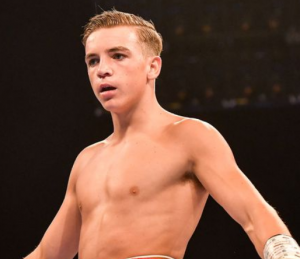
Dennis McCann
Fideo is a professional loser, not in a disparaging sense, but in the sense that the fighter took notice of his limitations early and set out to become a trial-horse for prospects in order that he might pay for new windows, school-clothes for his children, his wife’s anniversary present, earn extra money in excess of his regular income. This has seen the teak-tough Englishman cross path with numerous prospects including Andrew Selby, who got Fideo out of there on a TKO in the sixth. McCann managed it in just two, by way of ten count.
Furthermore, he predicted that it would be done with a single bodypunch, and this despite the fact that in an extraordinary sixty-four losses Fideo had been stopped just once. McCann though, dipped into a feint and then fired a straight from his southpaw stance into the pit of Fideo’s stomach. This punch had that devastating delayed effect; Fideo took a moment and then sank.
So heralded is his power, McCann has reportedly had some issues getting fights; nevertheless, Frank Warren is beaming. Prince Naseem Hamed, too, has shown a joyful interest. This was the right time to hop on the McCann bandwagon.
Pedro Matos perhaps diminished enthusiasm for him a little bit in some quarters. After a healthy start punctuated by good bodywork, McCann lost his way a little in the middle rounds. Matos never did enough to win a round, but he certainly troubled his young opponent, whose gliding footwork sometimes glided him into trouble. This is where his lack of seasoning matters. McCann, fast and powerful though he is, is learning skills most fighters pick up in their second year as an amateur but against experienced professionals. Two parties must collude to produce a sporting banana skin, and McCann’s lack of amateur background may be of concern.
That depends upon how McCann performs in the gym and in forthcoming contests. Whether or not I have gone too soon in naming him here as the prospect to follow in 2021 will depend upon what this wide decision victory over Matos means to his handlers. He may be slowed down blessed upon the punches he was stung with in the fourth and fifth, or he may be pushed along, his strong finish in that fight confirmation of his engine.
Either way, he remains a fighter worth watching and The Sweet Science will be sure to report on any major moves in the coming year.
Here is to a better 2021 for boxing, and for the rest of us.
Check out more boxing news on video at the Boxing Channel
To comment on this story in the Fight Forum CLICK HERE
-

 Featured Articles3 weeks ago
Featured Articles3 weeks agoThe Hauser Report: Zayas-Garcia, Pacquiao, Usyk, and the NYSAC
-

 Featured Articles2 weeks ago
Featured Articles2 weeks agoOscar Duarte and Regis Prograis Prevail on an Action-Packed Fight Card in Chicago
-

 Featured Articles1 week ago
Featured Articles1 week agoThe Hauser Report: Cinematic and Literary Notes
-

 Book Review5 days ago
Book Review5 days agoMark Kriegel’s New Book About Mike Tyson is a Must-Read
-

 Featured Articles4 weeks ago
Featured Articles4 weeks agoManny Pacquiao and Mario Barrios Fight to a Draw; Fundora stops Tim Tszyu
-

 Featured Articles4 weeks ago
Featured Articles4 weeks agoArne’s Almanac: Pacquiao-Barrios Redux
-

 Featured Articles3 weeks ago
Featured Articles3 weeks agoRemembering Dwight Muhammad Qawi (1953-2025) and his Triumphant Return to Prison
-
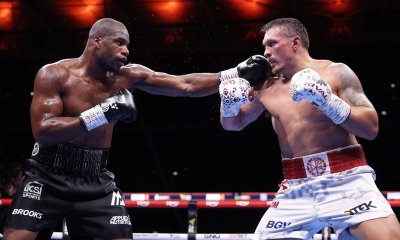
 Featured Articles4 weeks ago
Featured Articles4 weeks agoOleksandr Usyk Continues to Amaze; KOs Daniel Dubois in 5 One-Sided Rounds






